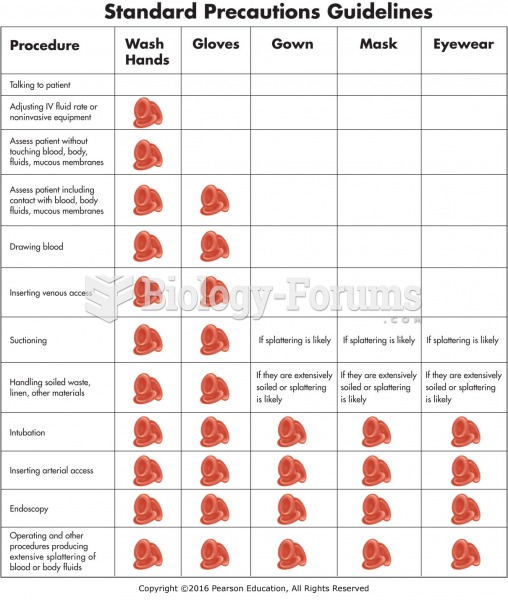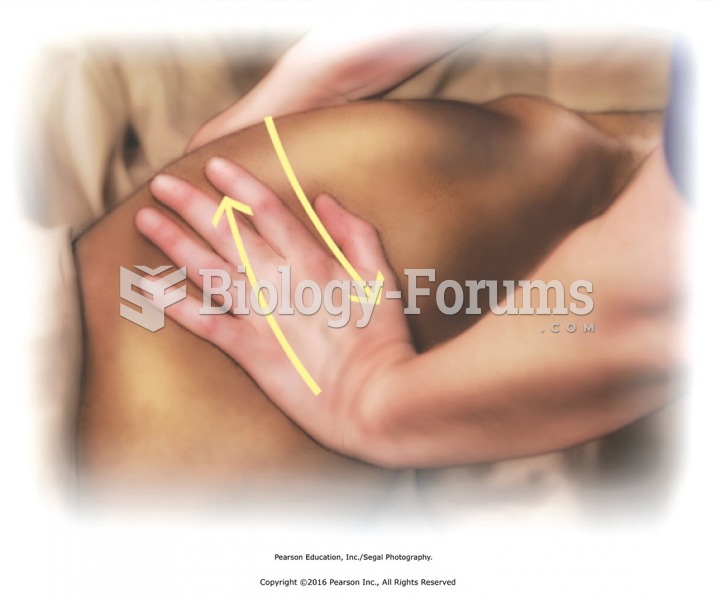|
|
|
When Gabriel Fahrenheit invented the first mercury thermometer, he called "zero degrees" the lowest temperature he was able to attain with a mixture of ice and salt. For the upper point of his scale, he used 96°, which he measured as normal human body temperature (we know it to be 98.6° today because of more accurate thermometers).
Disorders that may affect pharmacodynamics include genetic mutations, malnutrition, thyrotoxicosis, myasthenia gravis, Parkinson's disease, and certain forms of insulin-resistant diabetes mellitus.
The FDA recognizes 118 routes of administration.
The horizontal fraction bar was introduced by the Arabs.
More than nineteen million Americans carry the factor V gene that causes blood clots, pulmonary embolism, and heart disease.
 Standard precaution guidelines. Additional guidelines/protocols may be utilized depending on the ...
Standard precaution guidelines. Additional guidelines/protocols may be utilized depending on the ...
 An additional extension may be necessary to hoist a truck or van equipped with running boards to ...
An additional extension may be necessary to hoist a truck or van equipped with running boards to ...





